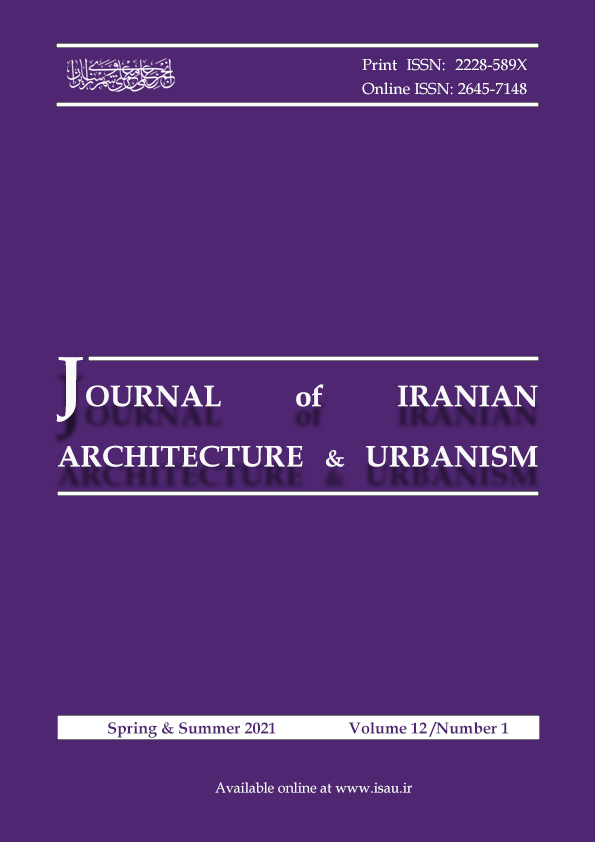Document Type : Original Research Paper
Authors
1 M.A inUrban Design, Department of Urban Planning, Pardis Branch, Islamic Azad University, Pardis, Iran.
2 Assistant Professor, Department of Urban Planning, Pardis Branch, Islamic Azad University, Pardis, Iran.
Abstract
Extended Abstract
Background and Objectives: Many different scholars have stated the importance of behavior settings in urban design and planning, such as Jacobs, Lynch, Zuker, etc. As one of the most important components of city construction, behavior settings can greatly affect cities’ residential and biological quality. Nevertheless, it is worth noting that social relations convert a place or environment to a behavior setting. Moreover, other smart cities shall be seen as a system in which there are many newfound opportunities for proposing digital systems, smart reactions, and optimization in different levels of integration. A smart city uses information and communication technology for city vitality and sustainability, but how is this goal manifested in urban design and behavior settings? Promoting social interactions in behavior settings in urban space is one of the discussed subjects in the field of urban design, which has been more emphasized recently. Regarding the advent of smart cities, the question is whether city smartification can affect the promotion of urban space quality in various fields or not. Therefore, generalizing the question, the study objective seeks to investigate the relationship of urban space smartification with constructive components of human behavior. Behavior settings are considered places out of individual boundaries or small groups almost everywhere and every time rather than being related to private and intimate space (Kashani Jo, 2010). Behavior settings in the past had a pivotal role in the life of individuals, families, neighborhoods, and cities. Many public, collective, and group activities took place in behavior settings. Therefore, a part of social activities, spending leisure time, and exchanging information and experiences used to be conducted through face-to-face contacts (Soltanzadeh, 2006). These behavior settings underlie the formation of memories. The internal activities define the behavior settings, and such activities and relationships among human beings cause mental images and urban memory (Fadaeinejad, 2006). Behavior settings belong to citizens. They are not limited to the physical aspect, and in fact, it gets meaning by the presence of humans and their activities. In other words, behavior settings are defined according to their time and place, and activities occur in regular order in their organized human and physical components (Scott, 2005). Additionally, the urban smartification process in the world includes creating new cities or making the existing ones smart. The first step in this process might be an agreement on a comprehensive definition and its general and detailed features from the smart city (Fazli, Modiri, and Farhoodi, 2018, 24). There have been many attempts to investigate the relationship between technology and urban space during the past century to design a pleasant urban environment (Phi II I ps, 2000). To summarize the theoretical principles, it is said that effective behavior patterns on the formation of behavior settings can be affected by the components of urban spaces, which have been smartified. In this study, global experiences of smartification of urban spaces such as Dubai, Amsterdam, Singapore, and Toronto were investigated. Using smart equipment in the fountains, kiosks, benches, public transportation stations, sidewalk flooring, lighting fixtures of these samples, the performance of such components has been changed. Smartification can be categorized into four general categories of smart urban equipment, smart buildings, smart urban furniture, and smart facade. The main idea of this study is that as the result of smartifying these components in urban paces, users’ reactions and behavior patterns will change, and such changes will be effective in the formation of behavior settings. Each one of these changed components (made smart) can be regarded as the manifestations of the smart environment in urban space. Each one can separately or simultaneously affect the components of behavior settings, obtained by summarizing theoretical principles, namely overt emotional behavior, problem-solving, major motion activity, the interaction among people and changing the things, and finally create behavior settings.
Methods: This study uses a descriptive-analytical method, and it is considered an applied research. In terms of the data analysis method, this study is also considered a quantitative study. Questionnaires with face validity were used to collect data. Cronbach’s alpha was also used to obtain its reliability value. In the second step, referring to the subject literature and the ideas of scholars, the authors tried to extract and fix the effective factors. The measurements range between “very much and continue as high, average, low, and without effect” in the questionnaire. The effect of each factor has been investigated.
Findings: The results of statistical tests indicate a correlation between the effective factors of forming behavior setting and the smartification variables in urban space. The statistical analysis of the collected data from the questionnaires showed that all the four investigated groups in urban space, including urban furniture, facade, buildings, and urban equipment, can positively and consistently affect behavior settings in the studied case after being smartified. The result of the Friedman test also indicated some points on the effectiveness of each existing component in the studied urban spaces on the formation of behavior settings in the users’ mind.
Conclusion: Statistical analysis of the data collected through the questionnaire showed that all four groups of elements in urban space (including urban furniture, facades, buildings, and urban equipment) could have a significant relationship with the formation of behavioral settings under the influence of smartification. The results showed that smart furniture and facades have the most effects on the formation of behavior settings.
Graphical Abstract
Highlights
Keywords


